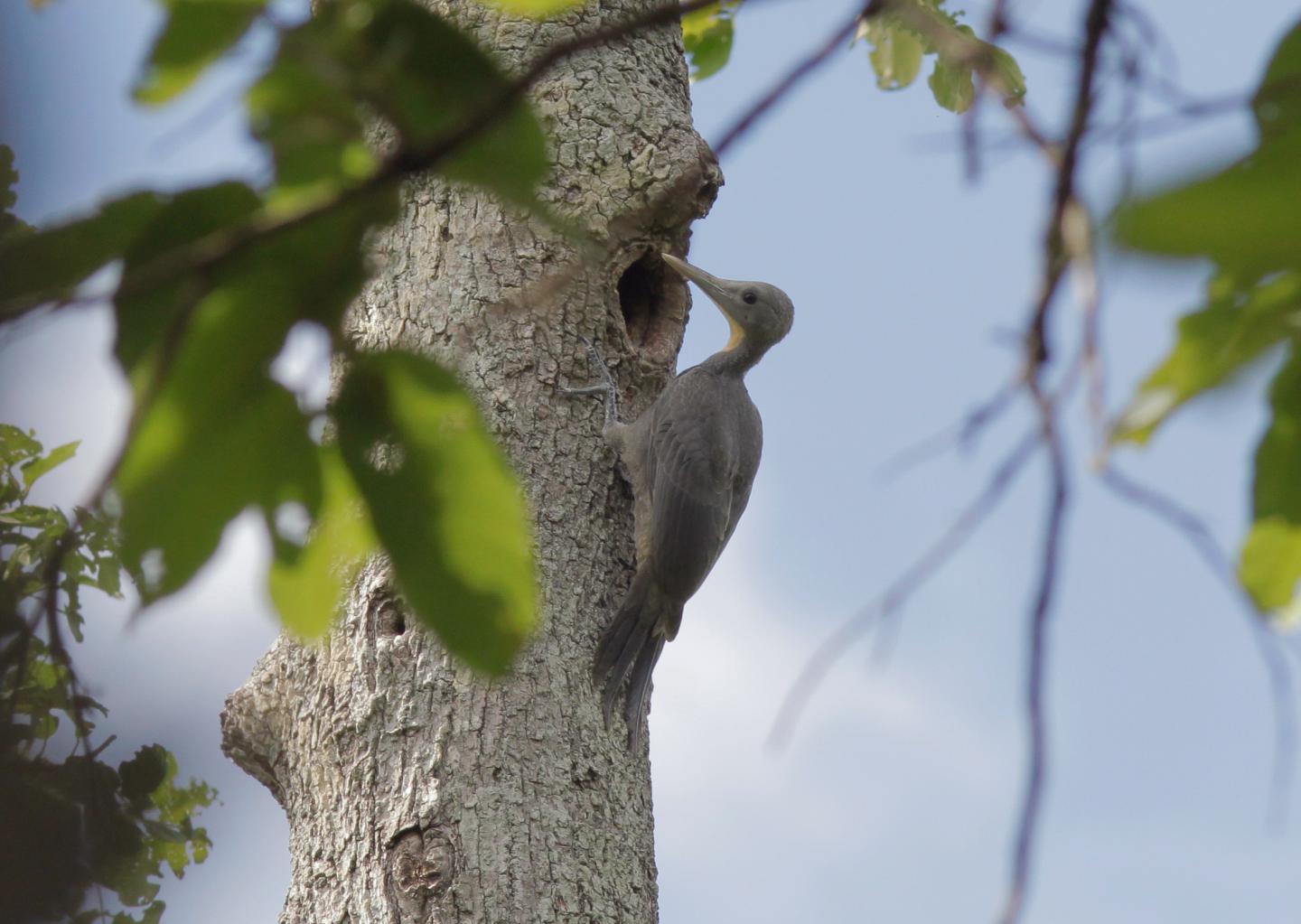A 30-year old hydroelectric project in Thailand has caused rainforest bird communities to collapse

Credit: Wich’yanan Limparungpatthanakij
BANGKOK, Thailand (December 7, 2018) – A study by an international team of conservation scientists found that a dam built in Thailand 31 years ago has caused the local bird population to collapse.
Reporting in the journal Global Ecology and Conservation, the authors found that 24 square miles (61 square kilometers) of dry forest now surrounds the reservoir. The 63 square-mile (165 square kilometer) Chiew Larn Reservoir inundated southern Thailand’s largest remaining tract of moist lowland rainforest – a unique habitat that was rich in biodiversity. The area surrounding the reservoir is now permanently degraded due to deforestation and human-caused fire, and the bird community is thus dominated by a handful of disturbance-tolerant species. Meanwhile, forest-dependent birds have largely vanished, as the once-contiguous rainforest has been replaced by isolated habitat patches overgrown with bamboo and vines.
More than half the birds recorded by the research team, led by Greg Irving and co-supervised by WCS’s Antony Lynam and ornithologist Philip Round, now consist of just a handful of wide-ranging and disturbance-tolerant species. These birds include the pin-striped tit babbler (Mixornis gularis) and dark-necked tailorbird (Orthotomus atrogularis), along with bamboo-loving species such as the bamboo bush-warbler (Abroscopus superciliaris), Indochinese blue-flycatcher (Cyornis sumatrensis), bamboo woodpecker (Gecinulus viridis) and white-browed piculet (Sasia ochracea).
Rainforest-dependent birds sharply declined, particularly ground-foraging babblers (family: Pellorneidae) and mixed-species foraging flocks. Some species vanished altogether, including the rail babbler (Eupetes macrocerus), Malay peacock-pheasant (Polyplectron malaccense), straw-headed bulbul (Pycnonotus zeylonicus), Storm’s stork (Ciconia stormii) and the great slaty woodpecker (Mulleripicus pulverulentus) – the world’s largest woodpecker species. Most of these species face the threat of extinction.
The authors say the results should serve as a cautionary tale as new hydroelectric projects are aggressively pursued in Asia. Without taking into account the potential for serious mainland edge effects and associated human disturbance of habitat, planners will underestimate the potential impact of hydropower development on bird biodiversity.
International entities, such as the World Bank, promote ‘good practice’ for reducing the impacts of hydropower on ecological systems using the principle of offsetting any potential impact on biodiversity with the goal of ‘no net loss’ or ‘net gain’. However, the authors say the vagaries and complexities of such biodiversity trading schemes render them impossible to monitor and implement and will in fact perpetuate biodiversity loss.
Said the study’s lead author Greg Irving of King Mongkut’s University of Technology Thonburi in Bangkok: “Planning processes related to hydroelectricity development need to be undertaken based on a realistic understanding of the negative impacts that any proposed project would have on biodiversity, including irreplaceable loss of lowlands and degradation of mainland habitat induced by edge effects.”
Said co-author Antony Lynam of WCS’s Asia Program. “Lowland rainforests across Asia are irreplaceable and nearly depleted; they should be conserved and expanded wherever feasible. They cannot be offset. Siting of dams and their sprawling reservoirs thus has to be carefully considered to strictly avoid any additional loss of riparian, lowland, and old-growth evergreen forest.”
The authors note that today, modern ‘greener’ sources of energy are available, including wind and solar, which leave smaller and more ephemeral environmental footprints. They say serious consideration should be given to whether any given large hydropower project is truly worth the environmental cost.
###
WCS (Wildlife Conservation Society)
MISSION: WCS saves wildlife and wild places worldwide through science, conservation action, education, and inspiring people to value nature. To achieve our mission, WCS, based at the Bronx Zoo, harnesses the power of its Global Conservation Program in nearly 60 nations and in all the world’s oceans and its five wildlife parks in New York City, visited by 4 million people annually. WCS combines its expertise in the field, zoos, and aquarium to achieve its conservation mission. Visit: newsroom.wcs.org Follow: @WCSNewsroom. For more information: 347-840-1242.
Media Contact
Stephen Sautner
[email protected]
718-220-3682
Original Source
https:/
Related Journal Article
http://dx.




